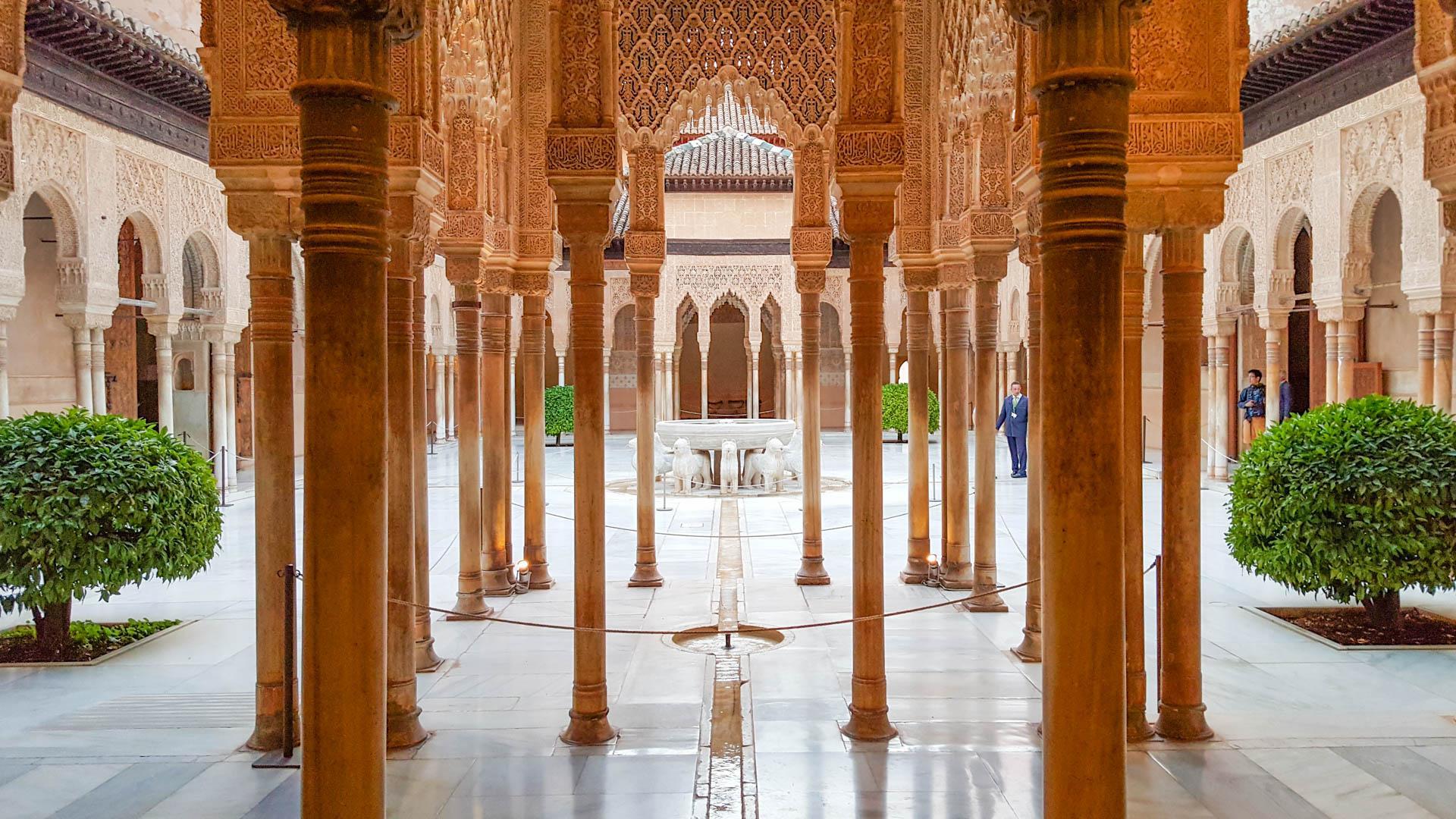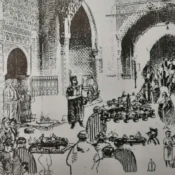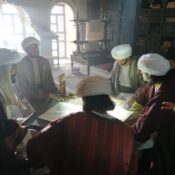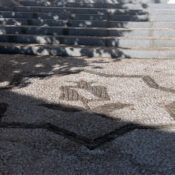Zacatín: shoemakers and back of the street

Zacatín: shoemakers and back of the street
Granada has three things that Madrid doesn't: the bell of Torre de la Vela, the Alhambra, and the Zacatín. Granada has three things that Madrid doesn't: the Zacatín and the Alhambra, and the Genil Bridge.
Zacatín Street is one of the most well-known streets in Granada. Located in the heart of the city, it connects Gran Vía with Plaza Bibrrambla. Very close to the Alcaicería, the street originally reached Plaza Nueva and extended into Calle Elvira. However, with the opening of Gran Vía in the 19th century, this last section was lost.
Although there are many theories about the origin of the name, the most widespread (and our favorite, we're not going to lie) is that it derives from the Arabic word saqqat, which means "clothesman." The lower part of the street is where the shops of clothesmen (people who sell old clothes and dresses, something like a second-hand shop, we could say), tailors, and shoemakers used to be. It's estimated that there were around 25 shops on the street, and in fact, until not long ago, Granada families came to this street to buy a new pair of shoes.
This street is so important that it not only appears in the verse with which we began this publication, but there is also a very popular saying: you are uglier than the back of Zacatín.
After the conquest of Granada in 1492 and continuing into the 19th century, the street underwent a large number of renovations, restorations, demolitions, and constructions; we won't focus on all of them, but on one in particular to understand the origin of this curious expression.
Apparently, during the 17th century, the houses and businesses on the street were quite tall (reaching up to four stories) and were supported solely by a structure of wooden and adobe partitions, plaster, and rope; the balance, in truth, wasn't very good considering the proximity of the Darro River. The back part of that street, known as Revés del Zacatín, was used as a dumping ground for defective or unusable merchandise, and also as a sewer. So neither the smell nor the landscape were very pleasant.
The street was restructured as we know it today in 1842. New buildings were constructed, and Abenamar, Joaquín Costa, and Sillería streets were opened. As we mentioned, these shoemakers' shops could still be seen until very recently. If you're in the city, we recommend walking this street, which is also part of our heritage.
All categories
- Arquitectura islámica
- Arte y decoración en la Alhambra
- Visitors Tips
- Cultura andalusí
- Granadian Sayings
- Folklore
- Granadian Cuisine
- Granada
- Granadian Province
- Alhambra History
- Distinguished Granadians
- Useful information
- Granadian Literature
- Granadian Literature
- Magic, legends and mystery
- Granadian Miscellany
- Granadian Nostalgia
- Granadian Traditions
- Granadian Traditions
- Guided tours
Latest posts




